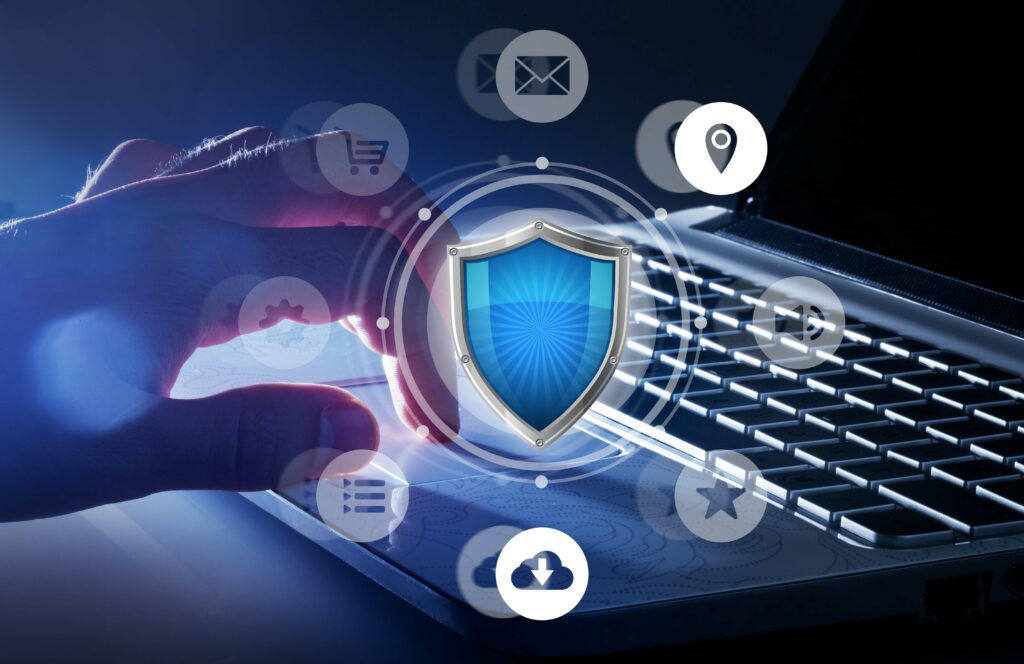
2024-5-7 13:34:19 Author: securityboulevard.com(查看原文) 阅读量:3 收藏
In today’s evolving threat landscape, endpoint security remains crucial. Endpoints, which can be any device that connects to your network – laptops, desktops, tablets, and even mobile phones – are a common target for cyber attacks. A successful endpoint breach can give hackers access to your whole network, potentially leading to serious consequences.
Endpoint Security Tips Organizations Should Know

The good news is that you can take action to strengthen your network defenses.
Here are some essential endpoint security tips that your organization should implement in 2024:
- Sharpen Your Inventory
- Principle of Least Privilege is Necessary
- Patch It Up Proactively
- Multi-Factor Authentication (MFA) is Your Security Ally
- Implementation of Endpoint Detection and Response (EDR)
- Develop a User-Friendly BYOD Policy
- Integrate Regular Risk Assessments
- Network Security Testing – A Proactive Approach
Sharpen Your Inventory
The initial layer of security is to understand what you’re safeguarding. Conduct a complete audit of your endpoints, assessing each device and categorizing it according to sensitivity and criticality. This strategy allows you to adjust your security measures to each device’s vulnerabilities. Use asset management technologies to ease the process and keep your inventory up-to-date.
Principle of Least Privilege is Necessary
The principle of least privilege reduces the risk of account breach. This is done by allowing users just the access to the data required to complete their tasks. Regular audits and evaluations discover and remove unnecessary liberties. Implementing role-based access controls ensures that permissions correlate precisely to job responsibilities, which improves endpoint network security. Similarly, several companies implement pentesting tools for VAPT testing and limit access to the data which helps in supporting the principle of least privilege.
Patch It Up Proactively for Endpoint Security
Exploitable software vulnerabilities are the major focus of cyber attacks. A strong patch management strategy is required to reduce this danger. This includes the timely provision of security upgrades for operating systems, apps, and firmware on all endpoints. Prioritizing key updates ensures that the most serious vulnerabilities are handled quickly, improving overall endpoint security posture.
Multi-Factor Authentication (MFA) is Your Security Ally
Using Multi-Factor Authentication (MFA) adds an additional security layer to the authentication process. This demands the inclusion of a secondary verification factor that is distinct from usernames and passwords, such as a time-based one-time password created by an authenticator app. As a result, unauthorized access attempts are considerably restricted. Even the compromising of user credentials is rendered ineffective, improving the network’s overall security posture.
Implementation of Endpoint Detection and Response (EDR)
Endpoint Detection and Response (EDR) technologies provide real-time monitoring and analysis of endpoint activities. This continuous procedure enables rapid detection and response to potential risks. Organizations that use EDR capabilities can dramatically minimize the window of opportunity for attackers, potentially preventing breaches entirely. This proactive strategy reduces possible damage and improves the overall networks.
Develop a User-Friendly BYOD Policy
The Bring Your Own Device (BYOD) concept allows corporate employees to use their own computing devices, including smartphones and tablets, for work-related tasks. While this strategy promotes flexibility and convenience, it also broadens the attack surface by increasing the number of endpoints that require safety measures. To reduce these risks, organizations might develop a comprehensive BYOD strategy. This clearly stated policy describes permissible personal device use, ensures adherence to security standards, and requires regular security monitoring of such devices, thereby strengthening the network’s overall security posture.
Integrate Regular Risk Assessments for Endpoint Security
Regular implementation of risk assessments and security audits serve as an annual audit of an organization’s endpoint network security posture. These assessments reveal vulnerabilities and areas for development, whereas audits check adherence to compliance with the respective security measures. This helps businesses to continuously refine their security tactics, assuring the effectiveness and resilience of endpoint defenses.
Network Security Testing – A Proactive Approach
To proactively improve endpoint security, organizations ought to perform network security testing, often known as network penetration testing. This approach simulates cyberattacks to identify potential vulnerabilities in networks. Companies may significantly hinder attackers’ attempts to acquire footholds within the network by proactively identifying and fixing these vulnerabilities. This proactive method improves the security stance by reducing the attack surface and increasing overall network resilience.
Book a Free Consultation with our Cyber Security Experts

To Summarize: Approach to Proactive Endpoint Security
In 2024, effective endpoint security will require a multi-layered defense. These simple tips include rigorous inventory management, least privilege enforcement, and proactive patching. Multi-Factor Authentication (MFA) and Endpoint Detection and Response (EDR) technologies help strengthen the security stance. User-friendly BYOD policies and consistent risk evaluations are critical. Network penetration testing proactively detects flaws and reduces the attack surface. Kratikal, with its 12+ years of cybersecurity experience, provides a solution with its Network Security Testing as a Service, enabling organizations to navigate an evolving threat landscape.
Don’t wait for an attack to happen. Secure your networks with Kratikal. Visit our website to learn more and get a quote today.
FAQ
- What is Endpoint Security?
Endpoint security is the practice of securing devices that connect to your network, such as laptops, desktops, tablets, and mobile phones, from cyberattacks. These devices are called endpoints because they represent the endpoints of your network.
- What are the benefits of implementing these endpoint security tips?
With the help of these endpoint security tips, organizations can strengthen their defenses against cyber attacks, protect their confidential data, and minimize the breach impact.
- How can Kratikal help your organization improve its endpoint security?
Kratikal offers Network Security Testing as a Service. This can help your business identify and fix vulnerabilities in your network before they are exploited by attackers.
The post Top Endpoint Security Tips Organizations Should Know In 2024 appeared first on Kratikal Blogs.
*** This is a Security Bloggers Network syndicated blog from Kratikal Blogs authored by Riddika Grover. Read the original post at: https://kratikal.com/blog/top-endpoint-security-tips-organizations-should-know-in-2024/
如有侵权请联系:admin#unsafe.sh

